From manitoulin.ca link to article by Michael Erskine -January 15, 2020
MANITOULIN – The Island seems to have developed its own version of the Green Mile with at least four new locations popping up in Sheguiandah First Nation and another reportedly located in the community of Aundeck Omni Kaning.
The lack of consultation with First Nations on the legalization of cannabis in Canada has led to a considerable amount of confusion over the status of First Nation outlets, with the federal government essentially taking a hands-off approach, the Province of Ontario attempting to step into the breach with a constitutionally iffy licencing regime and First Nation governments themselves stepping up to fill in the gap.
A recent traveller on the Highway 6 south corridor cannot help but notice signs announcing several businesses offering bud and other products for sale. The Expositor dropped by one such business, the Red Market, whose proprietor had reached out to this newspaper to tell their story.
Sheguiandah’s Fraser Whiteduck is the owner of the Red Market and of Anishinaabe and Haudenosaunee descent. He is no stranger to the issues surrounding First Nation trade. “My father was one of the first people persecuted for the tobacco trade,” he explained. “He had a barn and conveyors, choppers for cutting up the tobacco, he sold tobacco for ceremonial and trade purposes.”
Indigenous traders have engaged in the tobacco trade for millennia, long before the Crown, federal or provincial versions came calling.
Mr. Whiteduck is a chef by trade where he had a burgeoning career in Ottawa, but less than stellar diabetes management (he has type I) led to foot issues that precluded standing in a kitchen for hours on end. “I had to find a new career,” he said.
After following a number of potential paths, including learning more about his culture and traditions, he decided to return to his home community to start a cannabis store—the Red Market, a miiskoos cannabis dispensary.
Although the recreational use of cannabis may be front of mind for many when they consider the cannabis market, Mr. Whiteduck prefers to concentrate on the medicinal aspects of the plant.
Although there are four stores currently selling cannabis in Sheguiandah First Nation, Mr. Whiteduck’s Red Market located at 128 Ge Teh Miikan (Road), Urban Legends Herb and Medicinal and High and Buy located on Highway 6 and Manitou Herb and Dispensary located just around the corner from the Red Market (follow the small distinctive white signs), Mr. Whiteduck downplays the competitive aspects of the business. “We all have different products on offer,” he said, giving the example of Urban Legends which offers a selection of bongs and other paraphernalia.
“We currently have the best knowledge and the best selection,” he asserts. His store literature boasts 12 strains, but he currently stocks more than 24—including a small chunk of dark hard material labelled “Red Lebanese” hash. “We intend to offer at least 30 different strains by spring.”
“What’s in a strain?” one might ask—well quite a bit apparently.
Each of the strains sits in their own sealed mason jar container which the “budtenders” can offer up for a whiff. No touching the bud, however, even the attendants wear blue plastic surgical gloves if handling the product, or utilize chopstick-like tools and scales to measure out the product.
The “flowers,” as Mr. Whiteduck prefers to call the buds, each have different compositions of THC or CBD. THC tends to be related to the “high” aspects of the drug, while CBD is associated more with the medicinal qualities of the plant.
“They do anything,” said Mr. Whiteduck. “They cover the full aspect of the body. We take a holistic approach to help you find what is best for your body. What I take for my diabetes would be different from what someone else might take for their needs. Each have their different effects.”
Each of the strains also have distinctive aromas, linked to the flowers’ terpines, explains Mr. Whiteduck. Secreted in the same glands that produce cannabinoids like THC and CBD, terpenes are aromatic oils that colour cannabis varieties with their distinctive flavors like citrus, berry, mint and pine. There are currently over 100 different terpenes identified in the cannabis plant, and each strain tends toward a unique terpene type and composition. So a strain called Blueberry is likely to exude an aroma associated with that berry.
While the interview is being conducted a steady stream of customers enters the small trailer housing the Red Market. Each is quizzed on what they are seeking to accomplish with their purchase and the attendants make suggestions and offer alternatives that match up with what the customer says.
“I need to relax, something to keep me from thinking about things,” says one customer.
A strain called “Comatose” was suggested to fill the bill.
Comatose is an indica-dominant strain, explains Mr. Whiteduck. Indica is associated with the typical “body stone.” Indica strains tend to be physically sedating, good for relaxation. “Settle back, put on a movie and grab the popcorn,” he said. “Or if you need something to help you sleep.” These strains are also useful for those suffering from post traumatic stress disorder or recovering trauma, he suggests, as they tend to block out over thinking.
Sativas, on the other hand, are the “housework” strains, tending to elevate cerebral effects and creativity. “Sativas are good for social gatherings or working on creative projects,” explains Mr. Whiteduck. These tend to induce more of a euphoria. Those suffering from the aforementioned PTSD or trauma impacts are advised to steer clear of the sativas.
In between those two goalposts are the hybrids, those strains that have been bred to provide varying degrees of those divergent effects.
The product mix does not end at the varying types of bud or derivatives. Lining the walls are oils with differing concentrations of CBD, edibles such as gummy bears or chocolate bars, cannabis-infused drinks, topical ointments, bath salts and even bath bombs for the soaking enthusiast.
When it comes to the potential for date night, Mr. Whiteduck points to a series of different strains.
The Sheguiandah First Nation cannabis stores are band endorsed, asserts Mr. Whiteduck. “We have our own committee set up to monitor and regulate the businesses,” he said. “We are cleared with the UCCM Police and the OPP. It is totally safe for anyone to come and shop here.”
Mr. Whiteduck admits his staff can look a little intimidating, being hired for their security potential as well as their knowledge, but each goes out of their way to be accommodating and helpful when customers arrive. An assertion borne out by The Expositor’s observations during the interview.
“We want people to be comfortable when they come here,” said Mr. Whiteduck.
The Red Market is currently housed in a small portable trailer that was donated by a relative, but Mr. Whiteduck has commissioned a more robust and secure unit to house the business. Currently, he and his staff remove all product from the facility at the end of each business day.
The Expositor was unable to connect with the chair of the Sheguiandah First Nation committee overseeing the band’s cannabis market as of press time Monday.

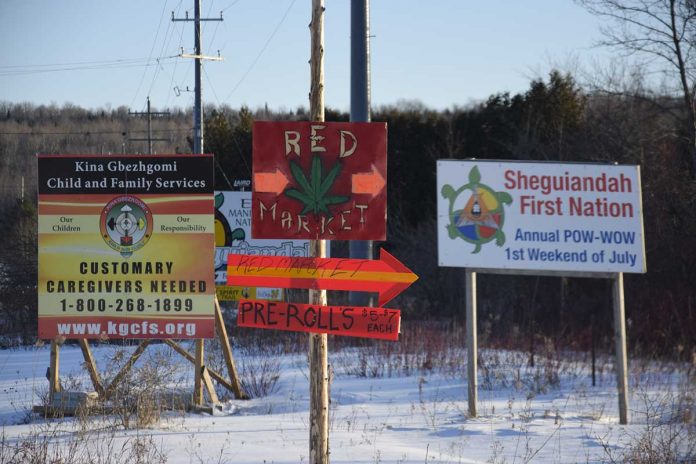



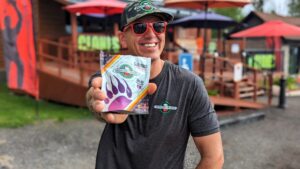

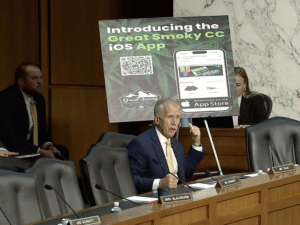
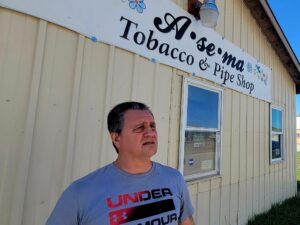
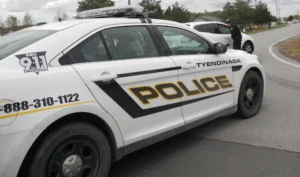
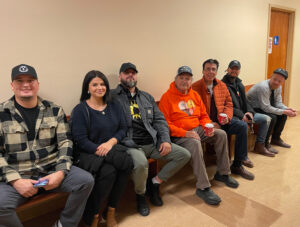
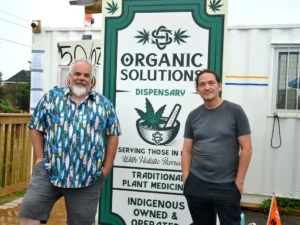
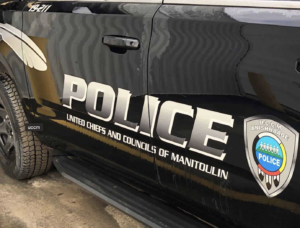
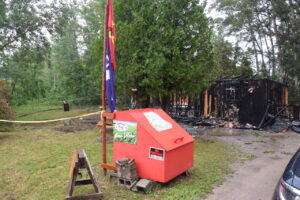
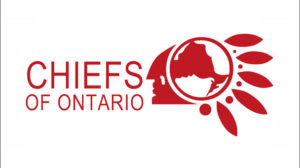
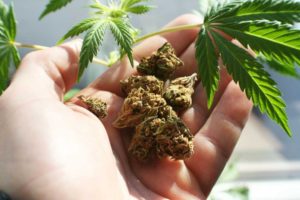
Comments are closed.